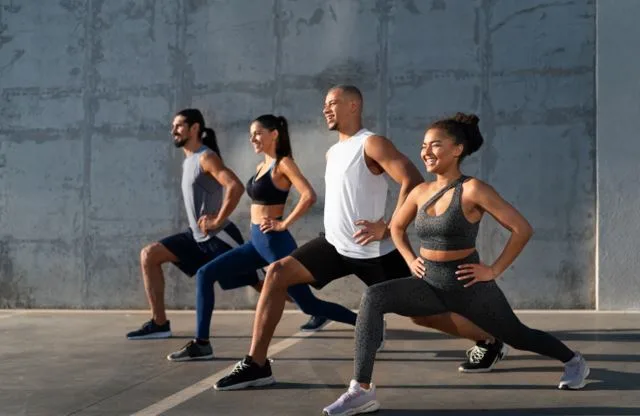How Micro-Training Is Replacing the Gym Routine in Busy Cities
In fast-paced urban life, finding time for a solid gym session has become a real challenge. Traffic, deadlines, late meetings, social commitments — the list goes on. As a result, the traditional gym routine is losing ground. In its place? Micro-training. Short, focused workouts that fit neatly into daily schedules. Think 5 to 15-minute bursts of exercise that you can knock out between Zoom calls or while waiting for your coffee to brew.
This shift is especially visible in business hubs and mega-cities, where platforms like parimatchbh.com are seeing rising engagement from users seeking flexible, on-the-go options—in fitness and beyond. They want efficiency without compromise. That’s the sweet spot where micro-training lands.
What Exactly Is Micro-Training?
Micro-training is not just a trend — it’s a whole different approach to fitness. Instead of one long workout, it breaks things into bite-sized sessions throughout the day. Each one targets a specific area: legs, core, mobility, or simply elevating your heart rate. No full change of clothes. No 30-minute commute to the gym. Just quick and effective.
These sessions can be:
- Bodyweight-only routines
- HIIT sprints
- Resistance band drills
- Functional mobility flows
They often last 5-15 minutes and can be repeated or stacked depending on your energy and time. Think of it like snacking on exercise instead of sitting down for a full-course meal. This approach suits people juggling multiple priorities. Plus, research shows that short, high-effort bursts can deliver similar benefits to longer, moderate workouts. Burnout? Less likely.
Why It Works in Urban Settings
City life is chaotic. Even if your gym is just down the block, the friction of getting there adds up. Between work calls, errands, and transport delays, free time shrinks fast. Micro-training fits where traditional gyms don’t: right into your apartment, office, or even public parks.
Add to that the growing popularity of hybrid work and mobile lifestyles, and it makes sense. More people are choosing adaptable workouts. They’re skipping gym queues, avoiding locker rooms, and training in real-time.
Here’s why it clicks with city dwellers:
- Zero commute: Save precious minutes every day.
- Flexible schedule: No need to plan around fixed classes.
- Minimal gear: Often no equipment needed at all.
- Consistency: Easier to keep up with daily habits.
It doesn’t mean people are training less seriously. On the contrary. Many micro-trainers structure their routines with precision, using timers, fitness trackers, and progression plans. The goal is still progress — just with smarter time use.
Top Micro-Training Formats Gaining Popularity
Over the last couple of years, fitness apps and platforms have exploded with short-format workouts. Some are intense. Others focus on recovery or flexibility. Here are a few crowd favorites:
1. EMOM (Every Minute on the Minute)
You do a set amount of work at the top of every minute, then rest until the next one begins. Great for strength and cardio.
- 10-minute EMOM: 10 squats, 10 pushups, 5 burpees
- Great for: full-body conditioning, time-crunched mornings
2. Tabata-Style Intervals
These are fast-paced. Typically 20 seconds of effort, 10 seconds rest, repeated eight times.
- 4-minute routines
- Perfect for: burning fat, waking up your system
3. Mobility Drops
Quick mobility flows designed to loosen tight hips, shoulders, or back from long sitting sessions.
- Usually 5-8 minutes
- Helps with posture, focus, and preventing injuries
Each format serves a different purpose. Stack them if you want more. Use them solo if you just need a boost. That’s the power of micro-training — you decide.
The Gear You Might Want (But Don’t Really Need)
You can do everything with just your body. Still, some tools help keep things spicy. No bulky machines, just compact and carry-friendly stuff. Here are a few solid add-ons:
- Resistance bands: Lightweight and versatile
- Jump rope: Excellent for fast cardio bursts
- Yoga mat: For grip and cushioning, especially on hard floors
- Timer app: Keeps your sessions sharp and structured
These don’t take up space and can fit in a backpack. Great for remote work warriors or frequent flyers.
Realistic Gains Without the Overhead
Some folks worry that short workouts won’t cut it. Truth is, when done right, they’re no joke. Micro-training can build strength, improve cardio fitness, and keep your metabolism fired up. The trick? Focus and form.
Here’s how to get the most out of it:
- Dial up intensity: Push hard, even for short bursts
- Stay consistent: Five days of 10 minutes beats one hour once a week
- Track progress: Use reps, time, or effort to measure gains
You’re not skipping fitness. You’re reshaping it to work for your life.
Everyday Integration: How to Make It Stick
One of micro-training’s biggest strengths is how well it blends with daily routines. No huge blocks of time. Just small decisions made repeatedly.
Here are 3 simple ways to weave it into your day:
- Morning Kickstart: 5-minute wake-up flow while your coffee brews.
- Work Break Boost: 10 squats and 10 lunges every time you take a screen break.
- Evening Wind-Down: Short yoga stretch before bed.
You don’t need discipline. You need systems. Small rituals that replace friction with flow.
Micro-training isn’t a compromise. It’s a shift. A smarter way to stay fit when time is tight and life moves fast. Urban professionals, parents, freelancers, and digital nomads — they’re all finding space to train in ways that match their pace.
It might not come with mirrors and machines, but it delivers. One short session at a time.






